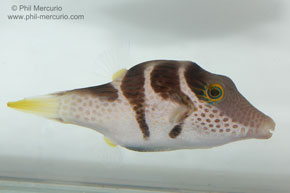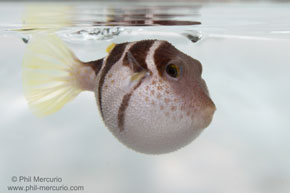Australian Institute of Marine Science (AIMS) researchers have published a paper this week about the mechanism of how exactly pufferfish handle being puffed up, in the peer-reviewed journal, Biology Letters.
“Pufferfish inflation, achieved by rapidly gulping water into the stomach, is one of the most iconic and remarkable predator-defence strategies in nature,” says co-author and AIMS@JCU research student, Georgia McGee.
McGee explains that according to previous scientific literature, it was generally thought that pufferfish hold their breath while inflated, effectively preventing oxygen uptake and governing how long they can avoid would-be predators.
“But instead, we found that pufferfishes actually have an excellent capacity to breathe while inflated. However, pre-inflation exercise and the act of gulping water appear to be very metabolically taxing, consequently increasing the risk of predation while recovering from previous inflation events,” she says.
According to AIMS researcher, Dr Timothy Clark: “While it may not be metabolically taxing for the fish to remain inflated, it seems that it takes great effort for the fish to get inflated in the first place. So, we found that both the 5-10 seconds of exercise prior to inflating and the inflation event itself, when it gulps water into the stomach, seem to be the energetically taxing parts.”
Clark makes the analogy with a sprint runner like Usain Bolt.
“This is like a sprinter running and then breathing like crazy after he or she has finished the race because they had been using anaerobic processes during the race. After sprinting, the runner needs to ‘pay back’ the oxygen debt that they acquired,” he concludes.
Like all pufferfish, black-saddled pufferfish (Canthigaster valentini, shown here) have the ability to 'puff' up when threatened (right). Photos: P. Mercurio



